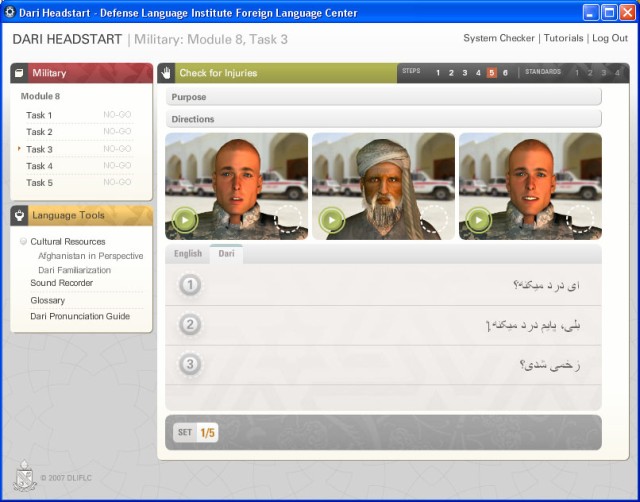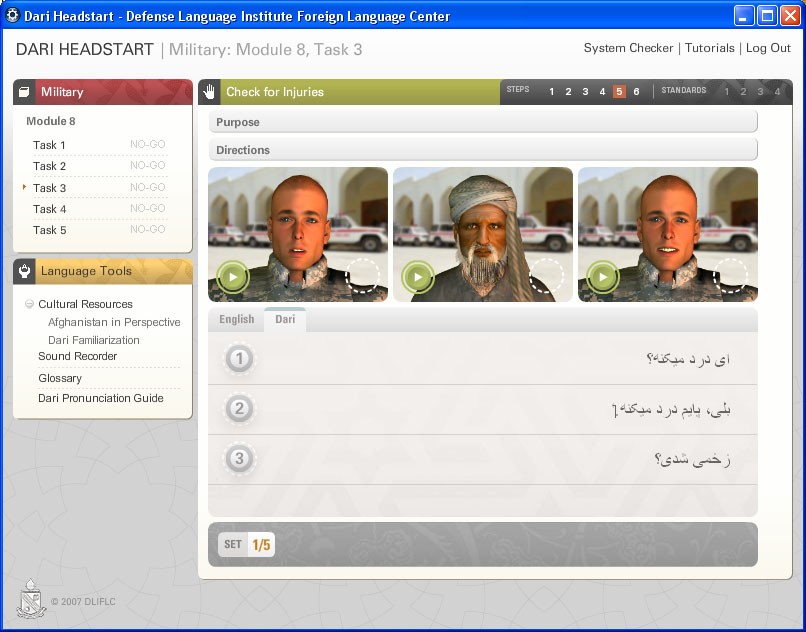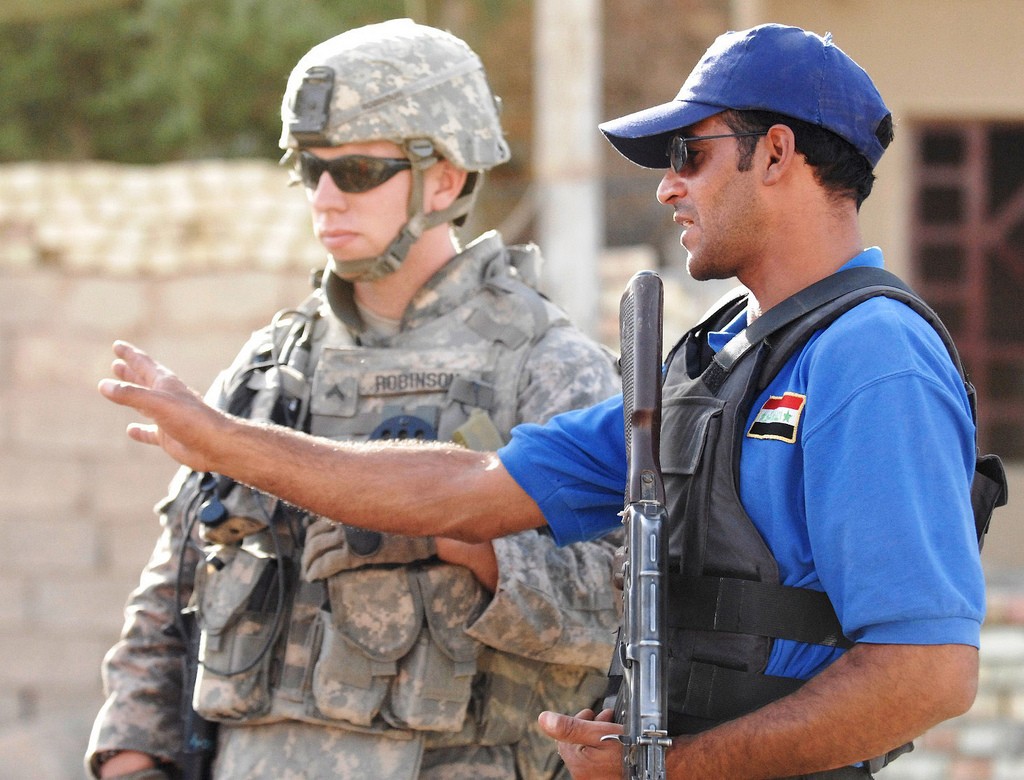WASHINGTON (Army News Service, Dec. 9, 2008) -- The Defense Language Institute has developed a "Headstart" program to help deploying troops gain skills in Arabic, Pashto and Dari -- languages spoken in Iraq and Afghanistan.
With conflicts ongoing in these two nations, there's a need for at least some Soldiers to have knowledge of the languages spoken there. A recent study by the House Armed Services Committee highlighted the need for increased language capability in the armed forces.
"Only a small part of today's military is proficient in a foreign language and until recently there has been no comprehensive, systematic approach to develop cultural expertise," committee members wrote in their report.
The Defense Language Institute's "Headstart" program is one path that can help Soldiers develop language skills. Headstart is a computer-based, self-directed language learning program aimed at military members getting ready to deploy. The program offers lessons in five languages, including Dari, Pashto, Persian Farsi, Mandarin Chinese, and the dialect of Arabic used in Iraq.
The self-guided program takes between 80 to 100 hours to complete. After completing the course, Soldiers should be able to hit the ground in a new country with enough language skills to conduct business and have limited communication with civilians in the local language, according to the DLI commandant.
"You'd be able to take care of the survival-needs level of speaking requirements," said Col. Sue Ann Sundusky, commandant, Defense Language Institute, Foreign Language Center. "Even effectively conduct conversations and ask questions about a broad range of topics and understand a significant amount of the answers coming back. You'd certainly be able to communicate if you worked through the program."
Sandusky said Headstart begins like every language program, in that all new language learners will need to learn numbers, colors, quantities, key verbs and key verb constructs. But the Headstart language program is designed primarily for military members on military missions and so the program is designed from that perspective.
"It's basic language learning in a military context," she said. "Every beginning student learns to count, and the basic military language student needs to learn to count too -- but we can contextualize that in a way that it is meaningful. What are you counting' Are you counting money, houses, people in a crowd'"
Each Headstart language program is made up of two sections, including "sounds and script" and "military." The sound and script portion of the program involves 10 modules that help Soldiers learn the four "modalities" of the language, including reading, writing, speaking and listening in the target language.
Module 1 of the Dari language program, spoken in Afghanistan, introduces students to the letters of the alphabet, and breaks those characters down by letters that are similar to the English alphabet, and letters that require students to learn a new sound. Subsequent modules introduce country names, telling time, weather, making appointments and topography. The lessons are broken into different interactive games involving word-matching using the Dari language script.
The second portion of the Dari language software, which is military themed, involves speaking and listening. Soldiers using the program will learn key phrases that might be used in the situations they could encounter in Iraq. In one module, users learn phrases and questions related to landmarks. "What city is this'" "This is Kandahar." "What is the name of this village'" "This village is Asad Khyl."
When DLI developed the Headstart program, the faculty put special emphasis on the military application of language, said Pamela Combacau, dean of technology integration at DLI.
"The main reason we are developing this is that there is a need for this and there is nothing like this," Combacau said. "There is a need to train on language in specific military situations, and since our Soldiers are warfighters, they don't have time to go through general global knowledge. This is a program for a specific purpose, not to teach a general language, but for the specific purpose for predeployment."
The lessons in the military portion show questions and phrases in English and in Dari script. The program also shows transliterated phrases, where the Dari words are spelled out in Latin letters, so students can better learn to pronounce the words.
And on the screen, a digitally animated "avatar," either a Soldier in battle gear or an Afghan civilian, speaks each phrase or question aloud. Within each module there are various steps, each presenting a different way to learn to speak Dari, each requires users to listen to the avatar speak and then determine what has been said.
The entire Headstart program is computer-based, involving various matching games, avatars, and speaking and listening skills.
"They try to capture a little bit of the excitement of video games in the sense that they have the avatar and you interact with it. It's to take advantage of the fact the current generation of young Soldiers are computer savvy and would be bored with something not cutting edge," Sandusky said. "And there is real good substantive language learning methodology in this program. It allows you to gain a little bit of familiarization in all four modalities"
The Headstart program also includes links to online "field support modules" at <a href="http://fieldsupport.lingnet.org"target=_blank>http://fieldsupport.lingnet.org</a>, that cover an array of cultural topics on nearly 40 countries. The cultural information is produced by members of the DLI staff and is largely original material, said Combacau.
All five language version of Headstart are available from the DLI's Website at <a href=http://fieldsupport.lingnet.org/products/headstart/" target=_blank> http://fieldsupport.lingnet.org/products/headstart/</a> and are also available on CD-ROM. Nearly a million copies of the Iraqi Arabic and Dari language programs have been distributed so far.




Social Sharing